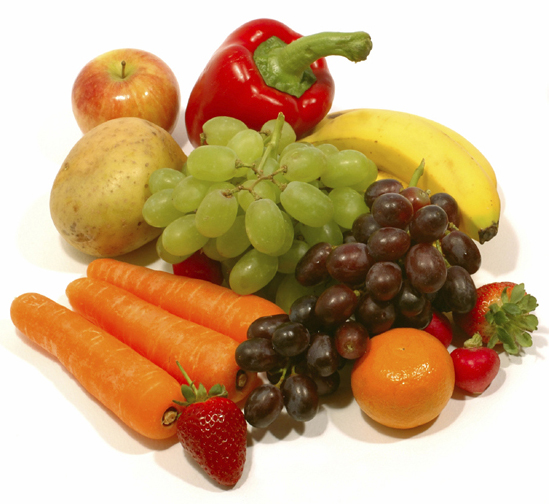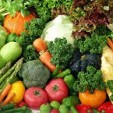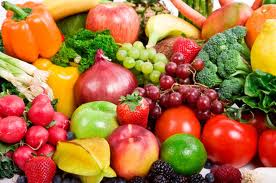N.E.W. S.T.A.R.T. N. Nutrition E. Exercise W. Water S. Sunlight T . Temperance A. Air R. Rest T. Trust in God Would You Like to be Healthier? Now is the time for you to get started! Here are 10 Top Tips that will help you on your way to a better health. 1. Eat as if you are in Eden, enjoying more fruits, nuts, vegetables, and more fruits, nuts, vegetables in their most natural state possible. 2. Start walking at least 30 minutes a day. A moderate walk is the most effective and cheapest form of exercise available. 3. Drink more water and put away soft drinks and coffee. Most people are chronically dehydrated and it’s slowly killing them. 4. Get enough sunlight, but not too much. We need sunlight for Vitamin D production, better rest, and even just to feel better. 5. Avoid using caffeine, nicotine, sugars, and other illegal drugs. These ingredients can destroy immune function and age you prematurely. 6. Find time to breathe in clean fresh air. Oxygen is the most important substance for life and health; go to where it is purest and breath deep! 7. Honor the Sabbath Day. Fellowship and worship at church and place your worries with God. You will be refreshed, and ready to tackle the coming week! 8. Get enough sleep during the week. Maintain a regular bedtime schedule of at least 7 hours every night. 9. Slow down; keep stressful situation to a minimum. Avoid debts and spend within your means. You will be a lot happier with less stuff to worry about. 10. TRUST IN GOD; pray and read your bible more. Remember that you have a friend in Jesus and can claim ALL His promises! Info from Amazing Health 8 Bible Secrets Magazine can be found at the links below http://www.amazinghealthfacts.org/ http://www.amazingfacts.org/...
Nutrition
Fruits and vegetables make up a huge part of a healthy diet. They contain essential vitamins, minerals, and antioxidants that keep your body functioning well and protect it against harmful free radicals, and strengthen your immune system. Eating fruits and vegetables of different colors gives your body a wide range of valuable nutrients, like fiber, folate, potassium, and vitamins A, K and C. Some examples include spinach, orange, sweet potatoes, black beans, yellow corn, purple plums, kale, red watermelon, pumpkin, and white...
Papaya fruit contains vitamin A, carotenes, vitamin C and other phyto-nutrients that are known to have been anti-oxidant, disease preventing, and health promoting .  Papaya has been proven natural remedy for many ailments. In traditional medicine, papaya seeds are anti-inflammatory, anti-parasitic, and analgesic, and they are used to treat stomachache and ringworm...
Papaya has been proven natural remedy for many ailments. In traditional medicine, papaya seeds are anti-inflammatory, anti-parasitic, and analgesic, and they are used to treat stomachache and ringworm...
Salt – table salt Salt, also known as table salt or rock salt (halite), is a crystalline mineral that is composed primarily of sodium chloride (NaCl), a chemical compound belonging to the larger class of ionic salts. It is absolutely essential for animal life, but can be harmful to animals and plants in excess. Salt is one of the oldest, most ubiquitous food seasonings and salting is an important method of food preservation. The taste of salt (saltiness) is one of the basic human tastes. ( Wikipedia) “Salt is a major culprit in depriving the body of calcium. The more salt you eat, the more calcium gets carried away by urine. Sticking to a low-salt diet can help you keep more calcium to strengthen your bones.” WebMD Salt is the world’s oldest food additive. Nine out of ten adult Americans eat too much salt each day, according to a report released by the Centers for Disease Control and Prevention. The problem is not even the salt that we add at the dinner table. People are consuming high amounts of salt in processed foods and at restaurants. High sodium levels increase blood pressure, and this puts people at a higher risk for heart disease and stroke. “These diseases kill more than 800,000 Americans each year and contribute an estimated $273 billion in health care costs,” says CDC Director Dr. Thomas Frieden. The CDC found that 10 types of foods are accounted for more than 40% of our sodium intake. They are: Breads and rolls Deli lunch meats Pizza Poultry Soups Cheeseburgers and other sandwiches Cheese Pasta mixed dishes Meat mixed dishes Snack foods such as pretzels, potato chips and popcorn Even though some of these foods are not high in sodium, eating multiple servings raises our salt levels. SO go easy on the salt or hold the salt. Read Most Americans should consume less sodium. Eating less sodium can help prevent, or control, high blood pressure. To learn more about sodium in your diet, visit http://www.cdc.gov/vitalsigns/Sodium/index.html. References Wikipedia, CNN Health,...
A Rainbow of Colors: Eating fruits and vegetables of different colors gives your body a wide range of valuable nutrients, like fiber, folate, potassium, and vitamins A and C. Some examples include green spinach, orange, sweet potatoes, black beans, yellow corn, purple plums, red watermelon, and white onions. For more variety, try new fruits and vegetables regularly. Fruits and vegetables are sources of many vitamins, minerals and other natural substances that may help protect you from chronic diseases. Some of these nutrients may also be found in other foods. Eating a well balanced diet and making other lifestyle changes are key to maintaining your body’s good health. Table below from Centers for Disease Control and Prevention Good sources: These foods contain 10 to 19 percent of the Daily Value per reference amount. Excellent sources: These foods contain 20 percent or more of the Daily Value per reference amount. CDC Fiber Diets rich in dietary fiber have been shown to have a number of beneficial effects including decreased risk of coronary artery disease. Excellent vegetable sources: navy beans, kidney beans, black beans, pinto beans, lima beans, white beans, soybeans, split peas, chick peas, black eyed peas, lentils, artichokes Folate Healthful diets with adequate folate may reduce a woman’s risk of having a child with a brain or spinal cord defect. Excellent vegetable sources: black eyed peas, cooked spinach, great northern beans, asparagus Potassium Diets rich in potassium may help to maintain a healthy blood pressure. Good fruit and vegetable sources: sweet potatoes, tomato paste, tomato puree, beet greens, white potatoes, white beans, lima beans, cooked greens, carrot juice, prune juice Vitamin A Vitamin A keeps eyes and skin healthy and helps to protect against infections. Excellent fruit and vegetable sources: sweet potatoes, pumpkin, carrots, spinach, turnip greens, mustard greens, kale, collard greens, winter squash, cantaloupe, red peppers, Chinese cabbage Vitamin C Vitamin C helps heal cuts and wounds and keep teeth and gums healthy. Excellent fruit and vegetable sources: red and green peppers, kiwi, strawberries, sweet potatoes, kale, cantaloupe, broccoli, pineapple, Brussels sprouts, oranges, mangoes, tomato juice,...
Health Tips : Veggies contain fiber, , phytochemical and loads of vitamins and minerals that may protect you from chronic diseases. Dark, leafy greens contain vitamin K for strong bones. Sweet potatoes and carrots contain vitamin A, which helps keep eyes and skin healthy and protects against infection. In one study, men eating 10 or more servings of tomato products per week saw a 35% decrease in their risk of prostate cancer. (Lycopene) Read more about...



